Best Security Cameras for Office Mailrooms
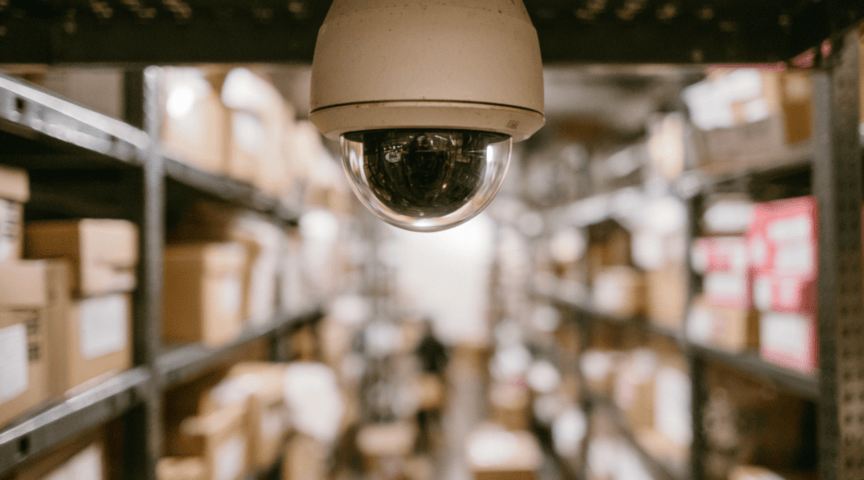
Mailrooms serve an important purpose for any organization. Gone are the days when they only operated as a place for receiving mail. With the boom of e-commerce, mailrooms have become the logistical heart of a modern business. Yet, for many managers, mailroom security planning often progresses no further than a single, centrally placed camera.
The reality is, a mailroom faces a two-pronged security challenge:
- External Risks (Theft/Loss): Packages disappearing before drop-off (e.g., at the loading dock) or being diverted by unauthorized personnel.
- Internal Risks (Handling Errors/Misplacement): Packages being mishandled, mislogged, or lost after a member of your staff has accepted responsibility for them.
Video surveillance is the first, essential layer of defense and deterrence. However, relying on camera footage alone to investigate a missing high-value delivery is often a frustrating, time-wasting exercise. Footage might show what happened, but it rarely provides the precise digital chain of custody that an audit trail demands.
The most secure mailroom management strategy pairs high-quality visual surveillance with solid digital accountability software. This unified approach creates an unbeatable system where physical evidence (video) is perfectly synced with the digital record (the audit trail).
Camera Buying Guide: What Features to Look for?
For a professional office mailroom, generic consumer cameras are simply insufficient. The cameras you deploy must be treated as investigative tools, not just recording devices.
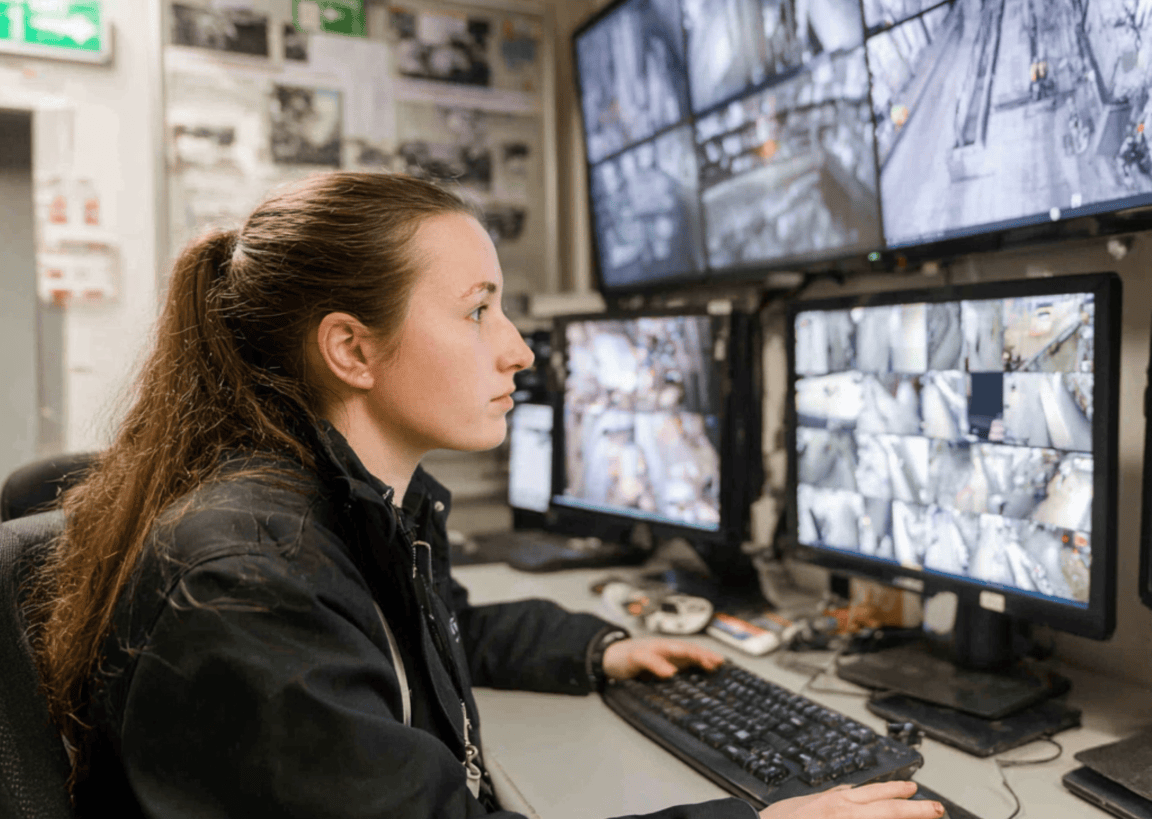
A. Resolution is Non-Negotiable
In a mailroom, the critical piece of evidence is often tiny, such as the shipping label, a tracking number, or a staff member's ID badge. Standard 1080p footage often lacks the pixel density necessary for digital zooming and reading small print, or clearly identifying a person's face from a distance.
4K (8MP) resolution is the modern professional minimum, ensuring you have the necessary detail for conclusive investigations.
B. Power & Connectivity
Security cameras must be reliable. PoE is the professional standard because it delivers both power and data over a single Ethernet cable. This simplifies installation, eliminates the need for nearby electrical outlets, and critically allows the entire camera network to be connected to a central Uninterruptible Power Supply (UPS), ensuring recording continues even during a power outage.
C. Clarity in Low-Light: WDR and Starlight Sensors
Mailroom lighting can be inconsistent, from the bright sun of a loading dock entrance to the dim lighting during after-hours cleaning.
- WDR (Wide Dynamic Range): Compensates for extreme contrasts (e.g., a bright window behind a person), ensuring both the bright and dark areas of the scene are clear.
- Starlight Sensors: Specialized low-light technology that captures high-quality, often full-color, video with minimal ambient light, essential for early morning or late-night operations.
D. Smart Features
Modern cameras include on-board Artificial Intelligence (AI) to improve efficiency. Look for Person/Package detection to filter out irrelevant movement (like a flickering light or blowing debris). This allows you to set up alerts for actual security events and saves immense time during post-incident review.
5 Best Cameras for Specific Mailroom Needs
Selecting the right surveillance camera involves strategically matching its features to the specific security challenge in your mailroom's workflow.
1. Best Overall Value & Clarity: 4K PoE Vandal-Resistant Dome Camera
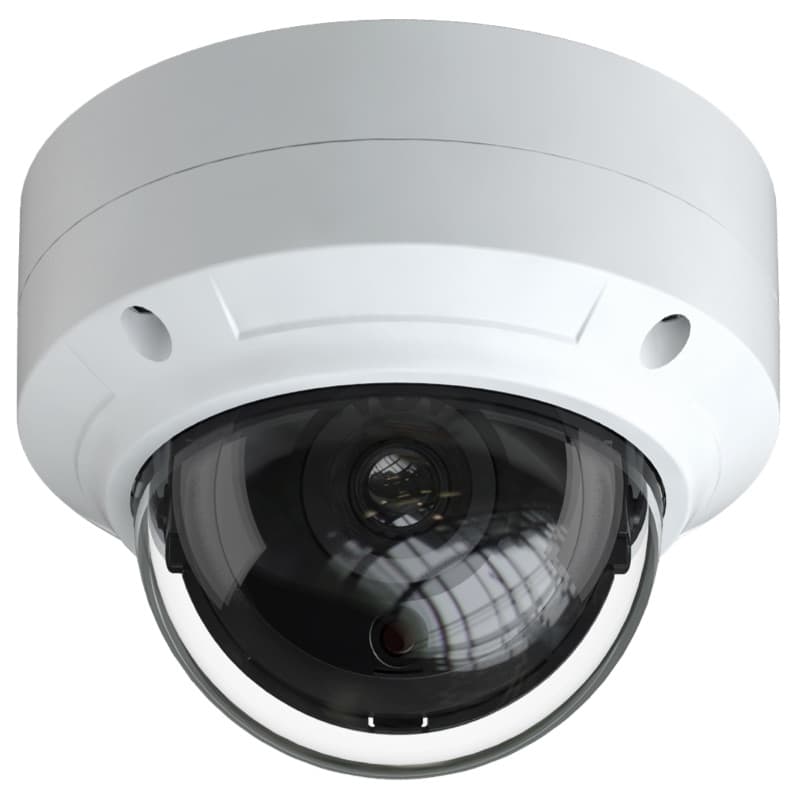
This is the foundational surveillance tool, designed to be discreetly mounted over the main sorting and check-in desk to capture crucial high-resolution details like tracking numbers and shipping labels.
- Pros:
- Impeccable Detail: 4K (8MP) resolution ensures small text on labels is legible, vital for investigations.
- Durable: IK10 vandal-resistant rating protects the camera from tampering and accidental damage.
- Discreet: Low-profile dome design is less intrusive than a bullet camera.
- Reliable: Uses PoE for simple, central power backup (UPS) connectivity.
- Cons:
- Limited flexibility; the fixed field of view can't be adjusted after installation.
- Can suffer from minor IR reflection issues in total darkness if the dome casing gets dirty.
2. Best for High-Traffic Inbound: AI-Powered Motorized Varifocal Bullet
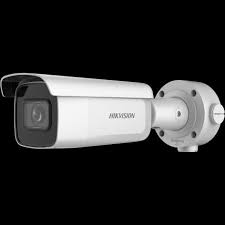
Ideal for loading docks or long inbound corridors, this camera's key strength is its optical zoom capability, allowing users to remotely adjust the view and magnify distant activity like delivery vehicle details.
- Pros:
- Optical Zoom: Remotely adjust the lens to zoom in on distant objects (like license plates or faces) without losing image quality.
- AI Analytics: On-board intelligence can detect and alert only for vehicles and personnel.
- Long-Range IR: Typically features powerful infrared illumination for deep-area coverage at night.
- Cons:
- Less discreet due to its pronounced bullet shape.
- Higher purchase cost compared to a fixed-lens camera.
3. Best for Total Area Coverage: 360° Panoramic (Fisheye) Camera
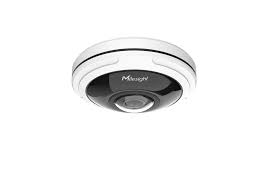
A single Fisheye camera, when mounted on the ceiling of a small-to-medium sized mailroom or lobby, is an incredibly cost-effective way to eliminate all blind spots and replace multiple traditional cameras.
- Pros:
- Complete Coverage: Provides a 360-degree view of the entire room from one mounting point.
- Cost Savings: Reduces hardware, cabling, and NVR channel license costs by consolidating views.
- De-Warping: Software flattens the curved footage into traditional, usable views for monitoring.
- Cons:
- Image detail (pixels per foot) is spread thin across the massive 360° area, making distant objects harder to identify than on a zoomed camera.
- Requires proper central ceiling mounting for optimal coverage.
4. Best for Auditing Staff Actions: Discreet 4K Turret/Mini-Dome with Built-in Mic
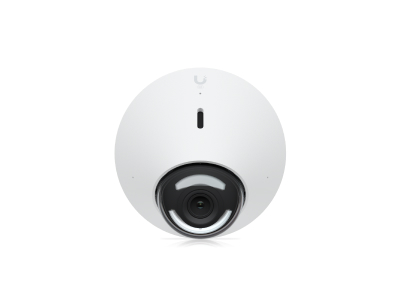
Positioned directly above a check-in counter or audit log area, this discreet camera captures ultra-clear video of the transaction and uses its built-in microphone to record audible confirmation of package scans.
- Pros:
- Integrated Audio: The built-in mic captures vital audio context (e.g., successful scan beeps or conversation).
- Discreet Form: The turret style is low-profile and has no dome cover, eliminating reflective glare.
- Clear 4K Video: High-resolution footage focuses on a tight, critical area for maximum detail.
- Cons:
- The microphone is typically mono-directional and has a limited effective range (usually under 35 feet).
- The recorded audio may be subject to local regulations regarding consent.
5. Best for External Entry Points: Starlight/Color Night Vision Bullet Camera
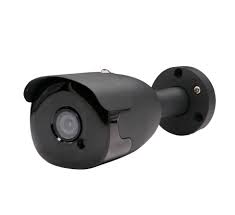
Best deployed at external doors, entry points, or dimly lit areas where after-hours activity is a concern, this camera uses low-light sensor technology to record in full color instead of black and white at night.
- Pros:
- Superior Night Evidence: Starlight technology provides full-color video in near-total darkness, dramatically improving suspect and vehicle identification.
- Weatherproof: Highly durable, IP67-rated construction for continuous outdoor reliability.
- Deterrent Shape: The classic bullet design is a visible deterrent.
- Cons:
- More susceptible to spider webs or insects blocking the view compared to dome cameras.
- Full-color night vision requires some minimal ambient light source (like a distant street light) to activate.
Integrating Digital Accountability
Cameras are excellent at answering the question, "What did I see at 3:15 PM?" But in the chaos of a mailroom, the question is always, "When was package tracking #9400... last seen, and who had it?"
The Problem Cameras Can't Solve
Manually sifting through hours of camera footage to find the exact 3-second clip of a specific missing package being scanned or moved is hugely time-consuming. This is the critical gap that mailroom management software is designed to fill.
The Mailroom Management Solution
For absolute security, the visual record must be cross-referenced with the digital chain of custody. This is where a system like Parcel Tracker transforms your security ecosystem:
- The Audit Trail: Every time a package is scanned into the system by a staff member, with a time stamp, and assigned a recipient, it creates an immutable digital record.
- The Seamless Integration: When a package goes missing, the Parcel Tracker system instantly tells you the exact minute it was last handled, who scanned it, and at which location. This allows you to jump directly to that precise time and camera in your video footage, reducing an hour-long investigation to a matter of seconds.
- The Final Proof: Digital proof-of-pickup (e-signature or photo confirmation) when the recipient collects the package closes the chain of custody loop, making internal disputes about package delivery virtually impossible.
Creating a Complete Security Ecosystem

Physical security (high-resolution, professionally installed cameras) and digital parcel management (robust package tracking software like Parcel Tracker) are not independent tools. They are two parts of a unified, unbeatable system.
A 4K camera is the eye that sees the package enter the room. Parcel Tracker is the memory that knows precisely who touched it, when, and where it went next. Together, they eliminate the vast majority of mailroom risks, transforming "missing package" investigations into a fast and conclusive audit.
Review your current camera system to ensure it meets the 4K/PoE standards. More importantly, evaluate your digital parcel management process to future-proof your mailroom security with a complete, verifiable chain of custody.






